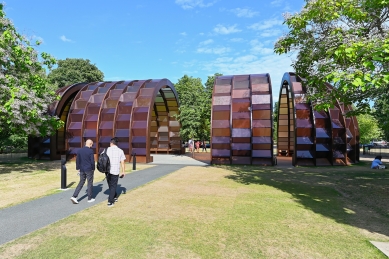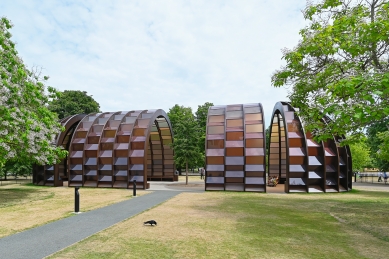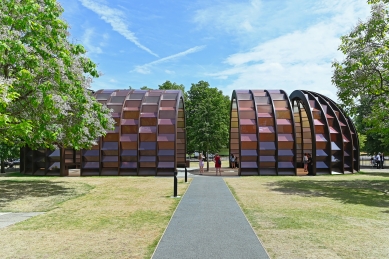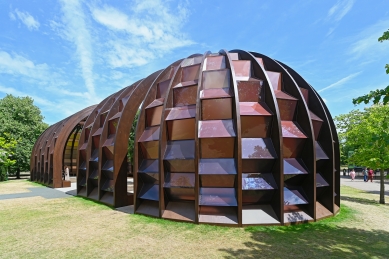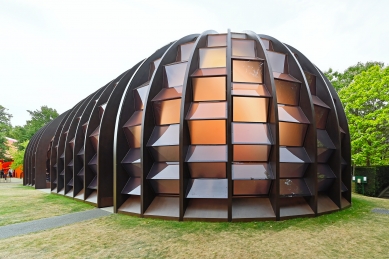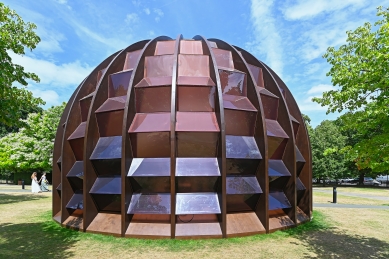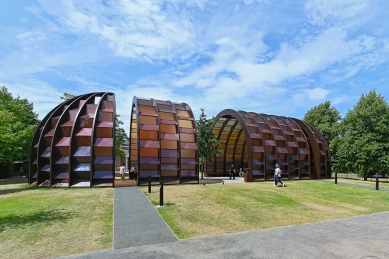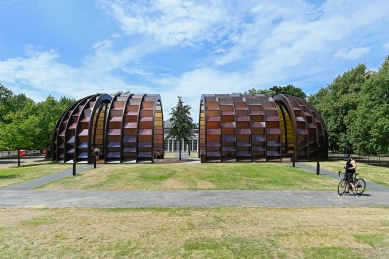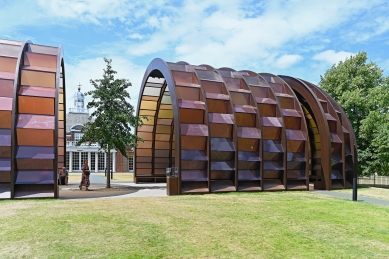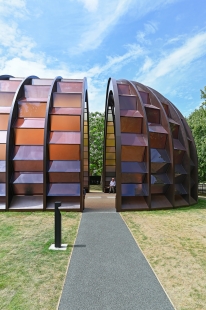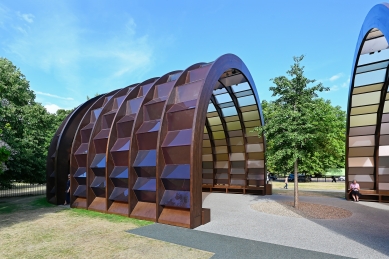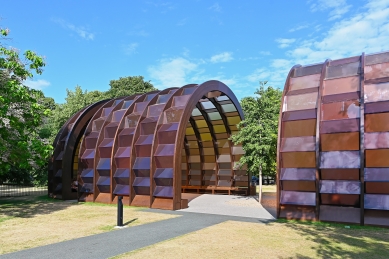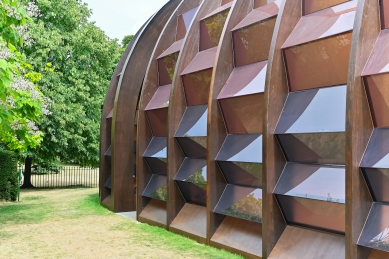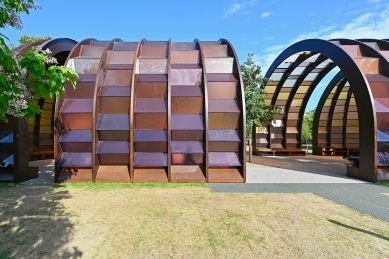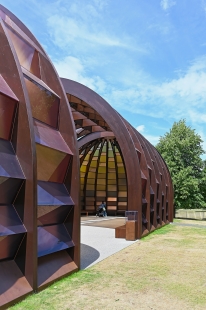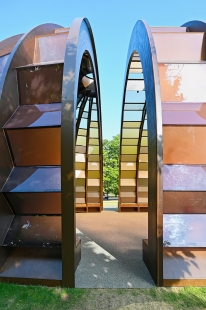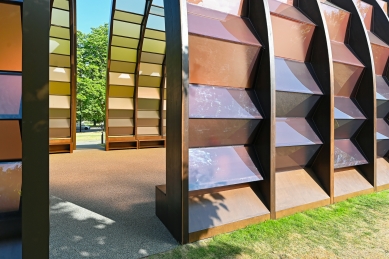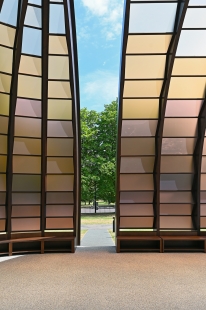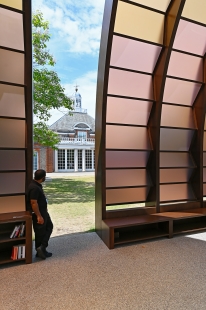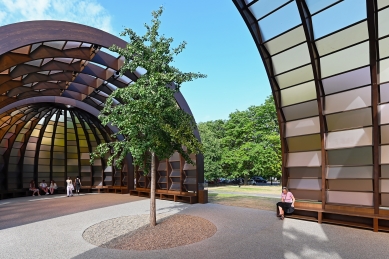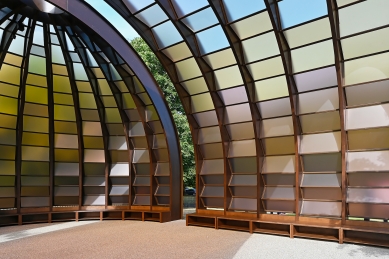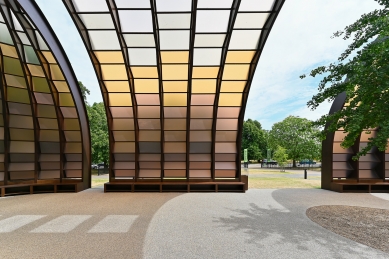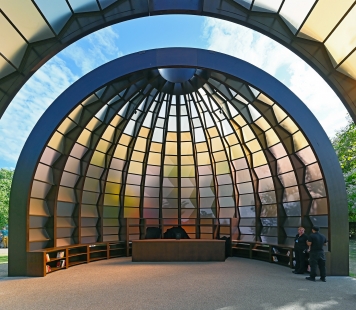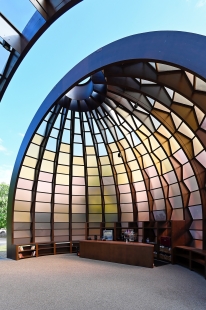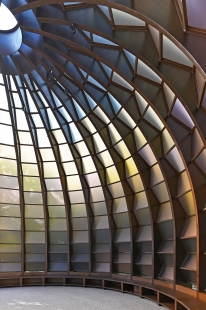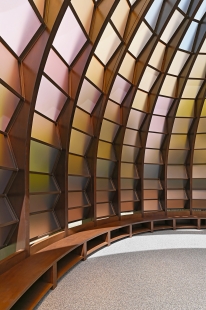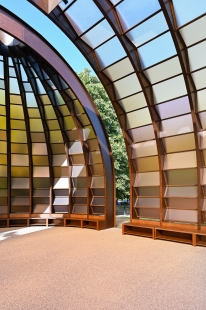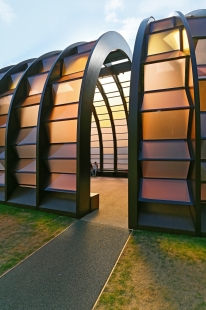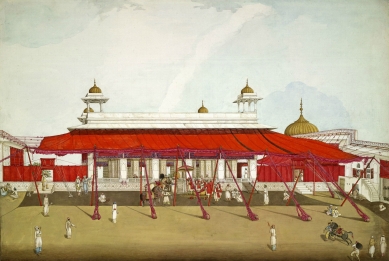
Serpentine Gallery Pavilion 2025

The author of the first summer pavilion in front of the Serpentine Gallery in London in 2000 was the British architect of Iraqi descent Zaha Hadid. For a long time, she was also the only woman allowed to design a temporary structure in Kensington Gardens. In 2009, Kazuyo Sejima collaborated on a joint design with Ryue Nishizawa, and since 2018, when the pavilion was created by Mexican architect Frida Escobedo, women's names have appeared regularly (2021 Sumayya Vally, 2023 Lina Ghotmeh, 2025 Marina Tabassum). The quarter-century-long tradition was only interrupted by the excessive ambitions of the Dutch studio MVRDV, which planned (and ultimately did not realize) an artificial mountain covering the historic gallery building, and in 2020, the realization of the pavilion by South African architect Sumayya Vally was postponed by a year due to the global pandemic. Originally, there was also a rule that the authors of the pavilion could only be those architects who had not yet completed any building on the British Isles. Later, the conditions were relaxed so that they should not have any completed buildings in light of certain unfinished projects by Jean Nouvel or Peter Zumthor. The authors of the designs change regularly each year, but initially, the main structural engineer for all pavilions was Cecil Balmond from the engineering firm Arup.
In 2025, a temporary structure by Bangladeshi architect Marina Tabassum was created in Kensington Gardens, which she named “A Capsule in Time“. Tabassum tried to partially transfer her experiences from the construction of emergency housing for residents in the Bengal Delta (the confluence of the Ganges and Brahmaputra rivers) made from grass and bamboo into the European environment. The resulting pavilion somewhat resembles a combination of a tropical greenhouse and a brutalist office building, but the author had more in mind the ceremonial tents “Shamiana“, which are fabric structures built for festive gatherings in South Asia. Her goal was to bring to London “the beauty of filtered light“, but for fire safety reasons and due to the unwelcoming British weather, coarse jute canvas had to be replaced with panels made of yellowish-brown plastic. The plastic panels filling the space between the wooden arches filter light to a yellow hue, so even during overcast skies, you feel a sense of sunny weather inside. It is also said to be the first mobile pavilion in the history of Serpentine. Both central arched segments are supposed to be movable, but it does not appear that they are actively utilized (despite hiding a hydraulic motor underground, which was one of the most expensive items in the project, moving the segments by only 1.4 m).
The 24th summer pavilion consists of a 55 m long wooden structure made up of semi-circular segments covering space for up to 200 guests. The project “A Capsule in Time“ is based on the temporary nature of all previous pavilions, which are constructed each summer for a few months in front of the Serpentine Gallery in Kensington Gardens. The design also refers to everyday life in the Bengal Delta, where water flowing from the Himalayan mountains often forces people to relocate their homes, a phenomenon the author frequently reflects upon in her work.
The time capsule consists of four wooden arched modules. The spaces between them are filled with transparent plastic panels. The individual pieces are separated from each other. The central element of the entire design is a mature ginkgo biloba tree, symmetrically planted along the axis of the bell tower of the historic Serpentine Gallery building. The pavilion “A Capsule in Time“ is free to access (as is the exhibition of Italian artist Giuseppe Penone inside the Serpentine Gallery) until October 26, 2025.
In 2025, a temporary structure by Bangladeshi architect Marina Tabassum was created in Kensington Gardens, which she named “A Capsule in Time“. Tabassum tried to partially transfer her experiences from the construction of emergency housing for residents in the Bengal Delta (the confluence of the Ganges and Brahmaputra rivers) made from grass and bamboo into the European environment. The resulting pavilion somewhat resembles a combination of a tropical greenhouse and a brutalist office building, but the author had more in mind the ceremonial tents “Shamiana“, which are fabric structures built for festive gatherings in South Asia. Her goal was to bring to London “the beauty of filtered light“, but for fire safety reasons and due to the unwelcoming British weather, coarse jute canvas had to be replaced with panels made of yellowish-brown plastic. The plastic panels filling the space between the wooden arches filter light to a yellow hue, so even during overcast skies, you feel a sense of sunny weather inside. It is also said to be the first mobile pavilion in the history of Serpentine. Both central arched segments are supposed to be movable, but it does not appear that they are actively utilized (despite hiding a hydraulic motor underground, which was one of the most expensive items in the project, moving the segments by only 1.4 m).
The 24th summer pavilion consists of a 55 m long wooden structure made up of semi-circular segments covering space for up to 200 guests. The project “A Capsule in Time“ is based on the temporary nature of all previous pavilions, which are constructed each summer for a few months in front of the Serpentine Gallery in Kensington Gardens. The design also refers to everyday life in the Bengal Delta, where water flowing from the Himalayan mountains often forces people to relocate their homes, a phenomenon the author frequently reflects upon in her work.
The time capsule consists of four wooden arched modules. The spaces between them are filled with transparent plastic panels. The individual pieces are separated from each other. The central element of the entire design is a mature ginkgo biloba tree, symmetrically planted along the axis of the bell tower of the historic Serpentine Gallery building. The pavilion “A Capsule in Time“ is free to access (as is the exhibition of Italian artist Giuseppe Penone inside the Serpentine Gallery) until October 26, 2025.
The English translation is powered by AI tool. Switch to Czech to view the original text source.
0 comments
add comment


